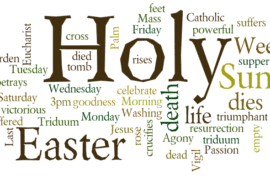I have been teaching various courses on Christian Origins as well as ancient Mediterranean religions and the emergence of Christianity in its Greco-Roman cultural and religious context for over four decades.
The one question I get most often goes something like this: “Dr. Tabor, can you explain Gnosticism–what is it, when did it began, and what are its basic ideas?” It is usually used as an adjective–gnostic-to describe this or that text, figure, or phenomenon. But one also finds the label “Gnostic” is often applied to figures like Valentius or to texts like the Nag Hammadi writings discovered in upper Egypt in 1946–just before the Dead Sea Scrolls in 1947. Some even see the gospel of John, in the New Testament as “gnostic” or at least quasi-Gnostic.
What many fail to realize is that the core ideas scholars label as “Gnostic” or “gnostic,” are rooted in the kind of Hellenistic Dualism that we find in Plato’s Phaedo, which argues for the immortality of the soul–so that “death” in a way is “life,”–that is new birth into the spiritual world above, whereas our human birth is a kind of “death,” into the dark world below in which our pure souls of “light” are captured. So broadly speaking, the characteristic expression of Hellenistic religiosity, from Empedocles to the Christianized versions found in the Church Fathers such as Clement of Alexandria and his student Origen–is fundamentally “gnostic.”
The presentations I am presently uploading on Youtube by David Wray are some of the clearest expressions of these core ideas that I have seen.
Most of you know my book, Jesus and Paul, but a more recent book, Paul’s Ascent to Paradise (https://www.amazon.com/Pauls-Ascent-Paradise-Apostolic-Experiences/dp/B08GB52LTN) places Paul into this world as the key figure who worked out the fundamental theological ideas of early Christianity, including the notion of ascent to heaven. In this book I discuss texts such “Poimandres,” from the Corpus Hermetica, the so-called “Mythras Liturgy,” in the Great Magical Papyri in Paris, as well as a host of early Jewish and Christian texts who take up these fundamental dualistic ideas of ascent to heaven as both the highest revelatory experience or a way to obtain “salvation” from the world below through escaping the cosmic powers below.









Comments are closed.